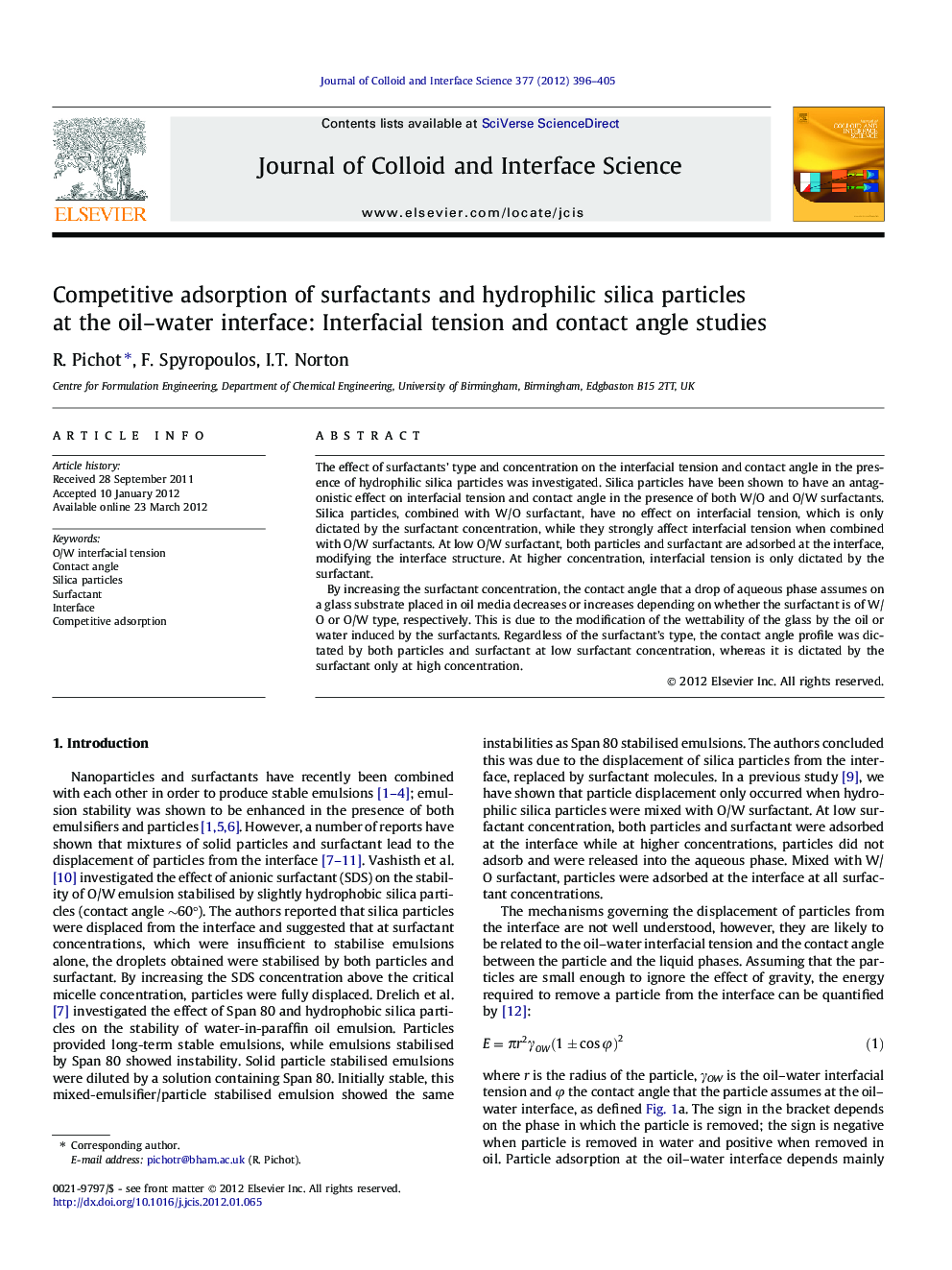| Article ID | Journal | Published Year | Pages | File Type |
|---|---|---|---|---|
| 608319 | Journal of Colloid and Interface Science | 2012 | 10 Pages |
The effect of surfactants’ type and concentration on the interfacial tension and contact angle in the presence of hydrophilic silica particles was investigated. Silica particles have been shown to have an antagonistic effect on interfacial tension and contact angle in the presence of both W/O and O/W surfactants. Silica particles, combined with W/O surfactant, have no effect on interfacial tension, which is only dictated by the surfactant concentration, while they strongly affect interfacial tension when combined with O/W surfactants. At low O/W surfactant, both particles and surfactant are adsorbed at the interface, modifying the interface structure. At higher concentration, interfacial tension is only dictated by the surfactant.By increasing the surfactant concentration, the contact angle that a drop of aqueous phase assumes on a glass substrate placed in oil media decreases or increases depending on whether the surfactant is of W/O or O/W type, respectively. This is due to the modification of the wettability of the glass by the oil or water induced by the surfactants. Regardless of the surfactant’s type, the contact angle profile was dictated by both particles and surfactant at low surfactant concentration, whereas it is dictated by the surfactant only at high concentration.
Graphical abstractFigure optionsDownload full-size imageDownload high-quality image (73 K)Download as PowerPoint slideHighlights► Surfactants and silica particles adsorption at the oil–water interface is studied. ► Opposing effects noted on particle adsorption when mixed with W/O or O/W surfactant. ► Colloids adsorption at the interface depends on surfactant type and concentration. ► With particles, glass wettability is affected by surfactant type and concentration.
